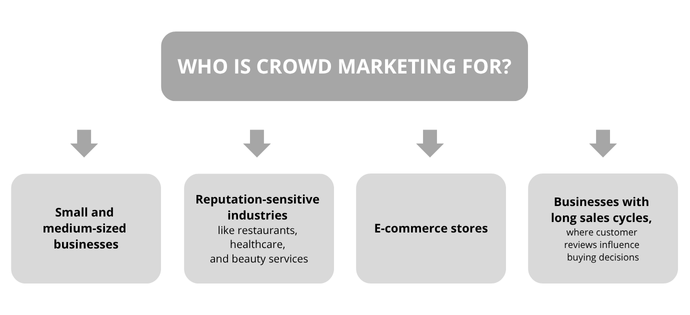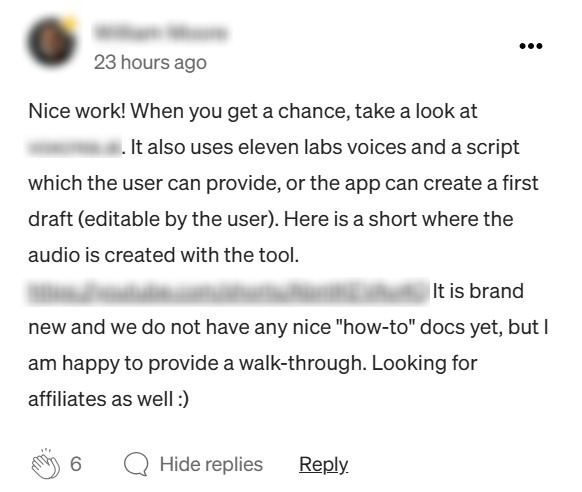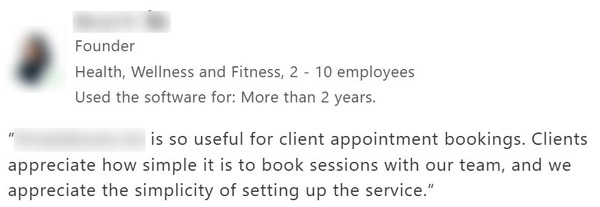Contents
Until your brand becomes as recognizable as Apple, Tesla, or Gucci, customers will rely on reviews and recommendations to decide whether to buy from you. For new businesses, this is especially tough — sales are slow, revenue is limited, and only a handful of customers leave reviews.
This is where crowd marketing comes in. It helps boost your site’s search rankings and build a positive brand image, even when starting from scratch. Below, we break down what crowd marketing is, who needs it, and how to build a winning strategy — from zero to proven results.
What Is Crowd Marketing
Crowd marketing is an organic promotion strategy where brands gain visibility through authentic user interactions. Instead of buying ads, you encourage real people to mention your products naturally in their online conversations.
Put simply, crowd marketing is about driving attention to your business through links, positive reviews, and comments posted on external websites and discussion platforms.
Why Use Crowd Marketing for Website Promotion
Crowd marketing serves two primary purposes: enhancing brand reputation and improving search engine rankings for target keywords. When a company has positive reviews, frequent media mentions, and active social media discussions, its website will rank higher than competitors in search results.
Positive comments about your business generate valuable organic branded traffic — the most prized type for search engines. This traffic:
- Improves click-through rates;
- Strengthens your site’s search visibility;
- Lowers advertising costs since competition for branded terms is weaker.
In a perfect world, maintaining spotless brand reputation would be easy. But reality is more complicated. You might face fake reviews from unethical competitors or disgruntled former employees posting negative stories online about how terrible everything was.
For established businesses, it’s impossible to prevent every negative incident. What truly matters is knowing how to clean up your brand’s reputation when damage occurs. This is where SERM (Search Engine Reputation Management) comes in — the marketing discipline focused on managing your search engine presence.
Crowd marketing serves as a powerful ORM tool. It helps build brand trust while pushing down negative search results by flooding the internet with positive mentions.

Now, let’s examine other ways crowd marketing impacts your business — beyond just reputation improvement.
Increases Website Traffic
Crowd marketing is like handing out flyers — but online and far less intrusive. There’s no obligation to click, buy, or take immediate action. Instead, the goal is to naturally capture attention from both potential customers and search engines.
How It Works in Practice
A company representative engages authentically — posting comments on social media, forums, and review platforms. They share “firsthand experiences”, naturally weaving in:
- Product links;
- Brand mentions;
- Helpful recommendations.
The key? It never feels like advertising — just genuine advice from a real person.
The Results:
- Increased visibility among target customers;
- Organic traffic growth without ad spend.
Boosts Brand, Product, or Service Awareness
When a brand gets mentioned across multiple platforms, people start to remember it, search for it, and talk about it. This organic buzz is especially valuable for new companies and product launches.
How It Works:
- A customer searches for a product/service;
- They discover authentic reviews or forum comments recommending your brand;
- They click through to your site and explore further.
- 1. A customer searches for a product/service;
- 2. They discover authentic reviews or forum comments recommending your brand;
- 3. They click through to your site and explore further.
The Payoff:
- Higher conversion rates –– More visitors become buyers;
- Stronger trust signals — Frequent discussions make your brand appear credible and established.
Strengthens Your Backlink Profile
Not all links are created equal. Online, links fall into two key categories:
- Paid Links. Commercial placements like sponsored posts or purchased backlinks from other websites.
- Organic Links. Natural links that appear when users genuinely share your content in discussions, forum threads, blog comments, or social media.
Search engines place much higher value on organic backlinks. When these links appear naturally in relevant conversations and come from diverse sources, they help your website pass search engine filters effortlessly. The more authentic brand mentions and quality backlinks you accumulate, the stronger your site’s link authority grows — ultimately improving your search rankings.
Types of Crowd Marketing
Link-Brand Mentions
Companies place direct website links in various online spaces like forum discussions, blog comments, and review sections. These links come in two main formats:
| Anchor links | Plain URL links |
|---|---|
| Incorporate target keywords within clickable text. For example: “Check these ergonomic gaming chairs [here]” where “here” links to the product page.” | Simply display the web address naturally in context, like: “I purchased at store.com — excellent variety” where the domain appears organically in a recommendation. |
In an ideal scenario, every platform where you place crowd links would have a high Domain Rating (DR) and strong reputation. However, the reality is different: truly authoritative sites are rare, and most either prohibit unpaid links or remove them promptly.
This means we need to adjust our standards. While you should always avoid spammy or extremely low-quality sites (DR below 20–30), moderately-ranked platforms (DR 30–40) can still be valuable if they meet three criteria: they’re relevant to your niche, are actively maintained, and have genuine user engagement.
For example, consider an established fishing forum with DR 35. While its domain authority isn’t exceptional, it hosts passionate anglers who actively share advice. For a sporting goods retailer specializing in fishing equipment, placing links here makes perfect sense. The thematic alignment creates natural linking opportunities that search engines won’t flag as suspicious while still reaching your target audience effectively.
Brand Mentions Without Links
This approach focuses on discussing your brand or products without including direct website links. It creates organic visibility while maintaining complete naturalness in conversations.
Common Formats:
| Brand Name Mentions | Product Descriptions |
|---|---|
| When users casually reference your company in discussions: “I’ve ordered from [BrandName] before — great service every time.” | When people highlight specific features or experiences: “Tried this face cream — amazing texture and results. Highly recommend!” |
These mentions may not lead to immediate clicks, but they help people recognize the brand. Most of the time, this leads to people searching for or buying the product later. Their strength lies in sounding like real recommendations instead of advertisements.
Crowd Marketing Strategy for Website Promotion
Jumping into comments and reviews without a solid plan is a mistake. First, define the scope of your campaign, select authoritative platforms, and create authentic user profiles. To avoid moderator bans, account owners should keep their accounts active by participating in discussions, answering questions, and providing value without dropping links. You can expect to see some results in about 1–2 months, as search engines take time to index new backlinks.
To streamline the process, follow this step-by-step approach:
Setting Your Link Volume Goals
Every business has unique needs. Your link-building strategy should align with your specific goals. Start by analyzing competitors’ backlink profiles, including their growth rate and SEO metrics.
Key Principles:
- Start small. Begin with a modest number of links and scale gradually.
- Follow competitor activity. If they generate 30–50 links monthly, avoid suddenly jumping to 500, as search engines may flag unnatural growth.
- Adjust for your niche. A board game store needs fewer links than a skincare brand to capture audience’s attention.
Example:
If you’ve been building 30 links per month, increasing to 100 (rather than 500) keeps growth organic and sustainable.
Finding or Creating Relevant Threads for Link Placement
Now that you have defined your campaign, the next step is to find where your target audience talks about topics related to your product. You probably have a keyword strategy and understand customer pain points. Now, it’s time to find active discussions or start new ones.
Joining Existing Conversations
- 1. Search for threads using queries like: “[keyword] + forum/reviews/discussion” (e.g., “best lawn mower forum”).
- 2. Evaluate engagement. Look for recent comments and active participants.
- 3. Join organically. Respond to questions or add insights before linking.
Why this works: Saves time by leveraging existing audience interest.
Starting New Discussions
- 1. Frame a genuine question (e.g., “Need a reliable auto mechanic in Houston”).
- 2. Encourage responses by detailing a specific problem.
- 3. Later, introduce your solution naturally (e.g., “I found [BrandX]’s service helpful because…”).
Why this works: You control the narrative while maintaining authenticity.
Selecting the Right Platforms for Placement
Crowd marketing only delivers results when links are placed on authoritative, active platforms. Below is a guide to safe and effective channels:
Niche Forums
Forums thrive on advice-sharing and long-term discussions — some threads stay active for years while ranking well in search engines.
Example:
An automotive forum thread comparing tire brands could naturally include:
“After trying [BrandX]’s all-weather tires, my braking improved significantly.”

Social Networks
While social posts rank poorly in search, their discussions hold value. Focus on:
- Local groups (Facebook Neighborhoods, WhatsApp communities);
- Topic-specific communities (Subreddits, LinkedIn groups);
- Influencer post comments (e.g., replying to a tech blogger’s review).
Key Tip: Prioritize platforms where your audience actively engages, not just posts.

Q&A Platforms
Quora or Reddit’s “Ask” threads attract users seeking quick solutions — perfect for positioning your product as an answer.
Tactic:
Respond to “Best CRM for small businesses?” with:
“We use [ToolY] because it automates invoicing — saves 10 hours/week.”

Blogs & News Sites with Open Comments
Articles on sites like Medium or industry blogs often spark discussions. Engage with:
- Data-driven insights (e.g., citing a study).
- Personal experiences (“Our team switched to this tool after testing 5 options…”).

Business Directories
Important for local businesses (restaurants, clinics). Optimize listings on:
- Google Business Profile (top SEO priority).
- Yelp or Trustpilot (review-focused).
Note: Ensure NAP consistency (Name, Address, Phone).

Review Sites
Sites like G2 or Capterra let you:
- Share authentic experiences (“We chose [SoftwareZ] for its analytics dashboard”);
- Counter negative reviews diplomatically.

Building and Establishing Authentic Accounts
With your campaign scope, topics, and platforms defined, the final step is creating credible user profiles to execute your strategy effectively.
Why Multiple Accounts Matter
Relying on a single profile to promote your brand risks detection by both users and algorithms. A profile named “Agnes White” that only praises one company will quickly appear suspicious.
How to Make Profiles Authentic
Each account should mirror a real user by:
- Participating in diverse discussions (not just your niche);
- Writing genuine reviews for various businesses;
- Engaging regularly (comments, reactions);
- Building a history (older accounts appear more trustworthy).
Time Investment vs. Shortcut
Organic approach: 2–3 weeks of active use to establish credibility
Alternative: Purchasing pre-aged accounts from reputable sellers (though these often lack depth and may still trigger suspicion)
- Profile photos (not stock images);
- Filled-out personal details;
- Natural posting patterns.
Who Should Handle Crowd Marketing?
Crowd marketing requires substantial time investment, from finding platforms and managing accounts to writing comments and tracking audience responses. Here’s how to organize the work through different approaches.
DIY Using Specialized Services
For businesses with limited budgets where crowd marketing isn’t the primary focus, handling it yourself with specialized platforms is an option.
These services help automate certain tasks:
- Finding relevant discussions;
- Analyzing platforms;
- Placing links;
- Tracking effectiveness.
Recommended tools:
LinkChecker and Serpstat.
Hiring a Contractor
If you lack time for manual crowd marketing, delegating to a freelancer or agency is the solution — provided you find a reliable partner.
Where to look:
- Agencies: SEO company rankings;
- Freelancers: Platforms like Upwork, Fiverr, LinkedIn groups.
What to consider:
When selecting a freelancer, evaluate their crowd marketing experience. Ideally, they should provide real case studies. Also review:
- The platforms they use;
- Their comment-writing style.
For better results, consider established agencies with proven expertise in SEO, analytics, and content marketing.
In-House Specialist
For comprehensive SEO campaigns that include crowd marketing, hiring a dedicated specialist may be optimal.
- Analyzing competitors and selecting platforms;
- Creating and maintaining authentic accounts;
- Placing high-quality links and mentions;
- Engaging in discussions;
- Monitoring audience response and adjusting strategy.
This approach gives you full control over the process, allows testing different promotion methods, and delivers stable results.
Pros and Cons of Crowd Marketing
Crowd marketing is a flexible, low-cost promotion tool, but like any method, it has both strengths and weaknesses.
DO’S
- Builds positive brand perception through organic mentions;
- Promotes products, services, or specific pages without direct advertising;
- Functions as subtle, native promotion that doesn’t feel intrusive;
- Generates additional (though limited) traffic — not a primary traffic source;
- Cost-effective – can be managed in-house or outsourced affordably.
DON’T’S
- Fails if product/service quality is poor — negative experiences spread quickly, damaging reputation;
- Risk of account bans if platform rules are violated (e.g., spamming);
- Mixed perception in marketing circles — some view it as outdated or unethical.


